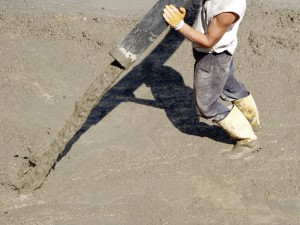
Types of Concrete
Our precision mixtures, manufactured using the latest technologies, can be easily adapted to all your projects.
Our technicians will help you choose the type of concrete best suited to your needs, and can even tailor a mixture according to your performance expectations.
Standard concrete
Commonly used for foundations, sidewalks, curbs and floors, this concrete sometimes contains entrained air to improve its resistance to the freeze/thaw cycle and de-icing agents.
Self-compacting concrete
Useful for hard-to-reach places, complex forms or areas with extensive steel reinforcement, this highly flowable concrete compacts on its own under the weight of gravity. In addition to a slump flow of up to 750 mm, its cohesive properties enable it to fill nearly any type of space, with no segregation or bleeding.
Anti-leaching concrete
Used primarily for casting under water, this highly flowable, non-segregating concrete (slump of 200 mm, plus or minus 40 mm) contains admixtures that help preserve its physical characteristics and prevent crumbling, even in contact with water.
High-performance concrete
With a compressive strength of more than 50 MPa, this concrete is often used for precast or prestressed components requiring high initial strength. It’s made from blended or ternary hydraulic cement and admixtures, improving its durability, resistance to abrasion and permeability to chloride ions. As a result, its lifespan is lengthened in certain weather conditions.
Expansive cement
Containing an anti-shrinking chemical agent designed for concrete slabs, this concrete enables you to obtain extraordinarily level surfaces. The reduced shrinkage, which reaches 80% after 28 days, prevents cracks from forming while the concrete cures.
Quick-setting concrete
Designed for projects requiring fast construction, this concrete is made from hydraulic cement with high initial resistance or general-purpose (Type GU) cement with a low water/cement ratio and setting accelerator.
Shotcrete
Sprayed at high velocity onto surfaces with no formwork, this concrete is mainly used for walls, dams and mine tunnels. It can be made using a dry or wet process.
Light concrete
This concrete weighs up to 25% less than standard concrete, thanks to the use of Styrofoam pellets, Cellucrete or Zonolite. It’s used especially for thermal and sound insulation in roofing, as a levelling layer in floors and roofs, and in firewalls.
Fibrous concrete
Used for structural reinforcement, this concrete contains fibres distributed evenly throughout the mix. These synthetic or steel fibres reduce internal stress and prevent cracking, increasing the lifespan of the product.
Coloured concrete
By adding coloured granules or pigments to the mix, you can obtain concrete in the colour of your choice. This process is chiefly used for concrete slabs and decorative products.
Backfill concrete (non-shrinking)
This very thin concrete with a resistance of 0.7 MPa is a self-compacting controlled density backfill material. As a result, no compacting is required to obtain an adequate load-carrying capacity. In addition, its low resistance makes it easy to remove using conventional equipment. This product is used for excavations and roadwork trenches.
